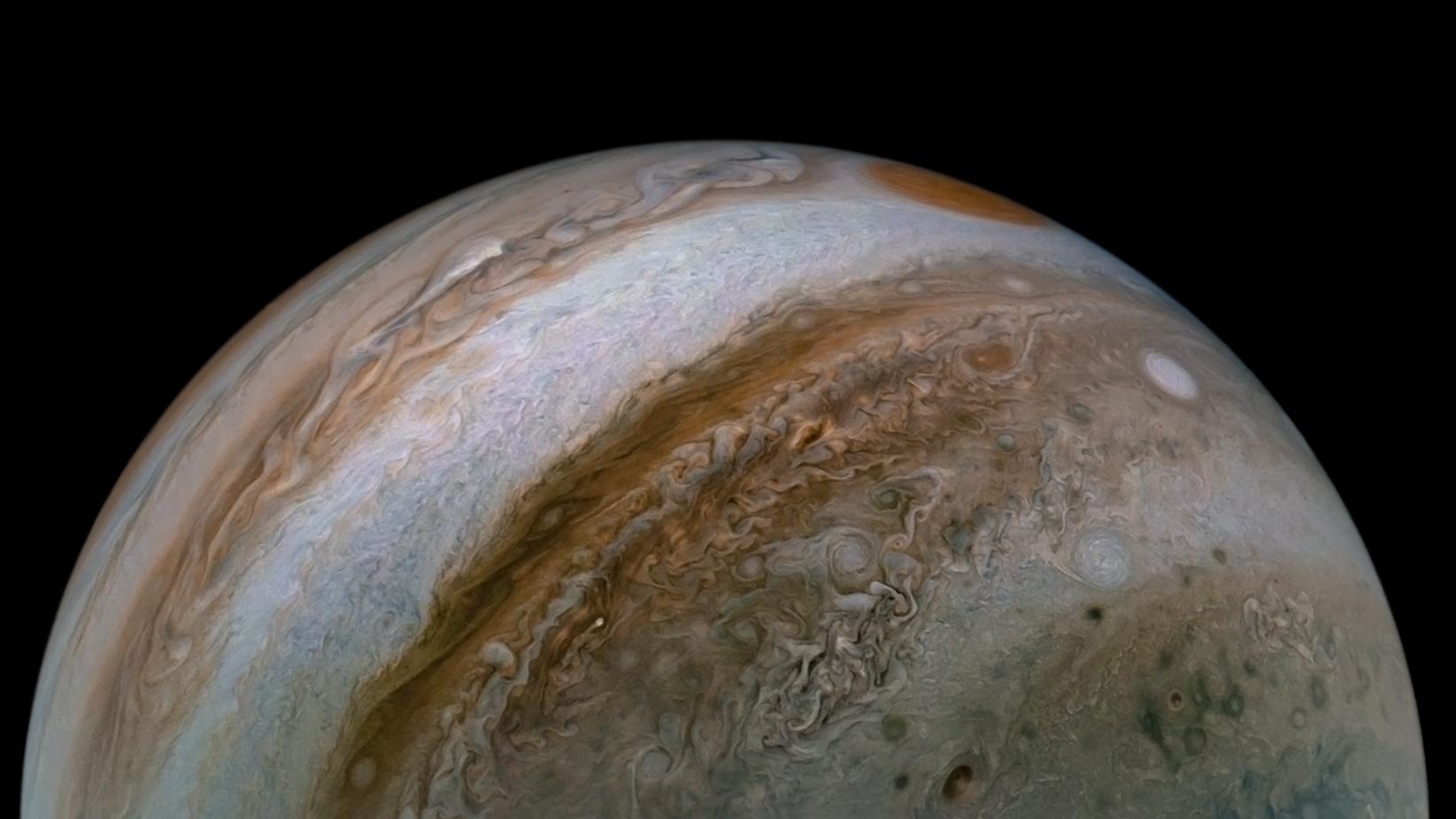
|
Deep Jet Streams in Jupiter’s Atmosphere
- Click the image above for a larger view
- Full-Res JPEG (1645 x 925) (114.8 kB)
- Full-Res TIFF (1645 x 925) (3.0 MB)
Caption:
This view of Jupiter's turbulent atmosphere from NASA's Juno spacecraft includes several of the planet's southern jet streams. Using data from Juno's instruments, scientists discovered that Jupiter's powerful atmospheric jet streams extend far deeper than previously imagined. Evidence from Juno shows the jet streams and belts penetrate about 1,800 miles (3,000 kilometers) down into the planet.
The storm known as the Great Red Spot is also visible on the horizon, nearly rotated out of view as Juno sped away from Jupiter at about 30 miles per second (48 kilometers per second), which is more than 100,000 mph (160,900 kilometers per hour).
Citizen scientist Tanya Oleksuik created this color-enhanced image using data from the JunoCam camera. The original image was taken on Dec. 30, 2020 as the Juno spacecraft performed its 31st close flyby of Jupiter. At the time, the spacecraft was about 31,000 miles (about 50,000 kilometers) from the planet's cloud tops, at a latitude of about 50 degrees South.
Background Info:
JunoCam's raw images are available for the public to peruse and process into image products at https://missionjuno.swri.edu/junocam/processing . More information about NASA citizen science can be found at https://science.nasa.gov/citizenscience and https://www.nasa.gov/solve/opportunities/citizenscience .
More information about Juno is at http://www.nasa.gov/juno and http://missionjuno.swri.edu . For more about this finding and other science results, see https://www.missionjuno.swri.edu/science-findings .
Cataloging Keywords:
| Name | Value | Additional Values |
|---|---|---|
| Target | Jupiter | |
| System | Jupiter | |
| Target Type | Planet | |
| Mission | Juno | |
| Instrument Host | Juno | |
| Host Type | Orbiter | |
| Instrument | JunoCam | |
| Detector | ||
| Extra Keywords | Atmosphere, Color, Rotation, Storm, Visual | |
| Acquisition Date | ||
| Release Date | 2021-02-09 | |
| Date in Caption | 2020-12-30 | |
| Image Credit | Image data: NASA/JPL-Caltech/SwRI/MSSS Image processing by Tanya Oleksuik © CC NC SA | |
| Source | photojournal.jpl.nasa.gov/catalog/PIA23809 | |
| Identifier | PIA23809 | |
